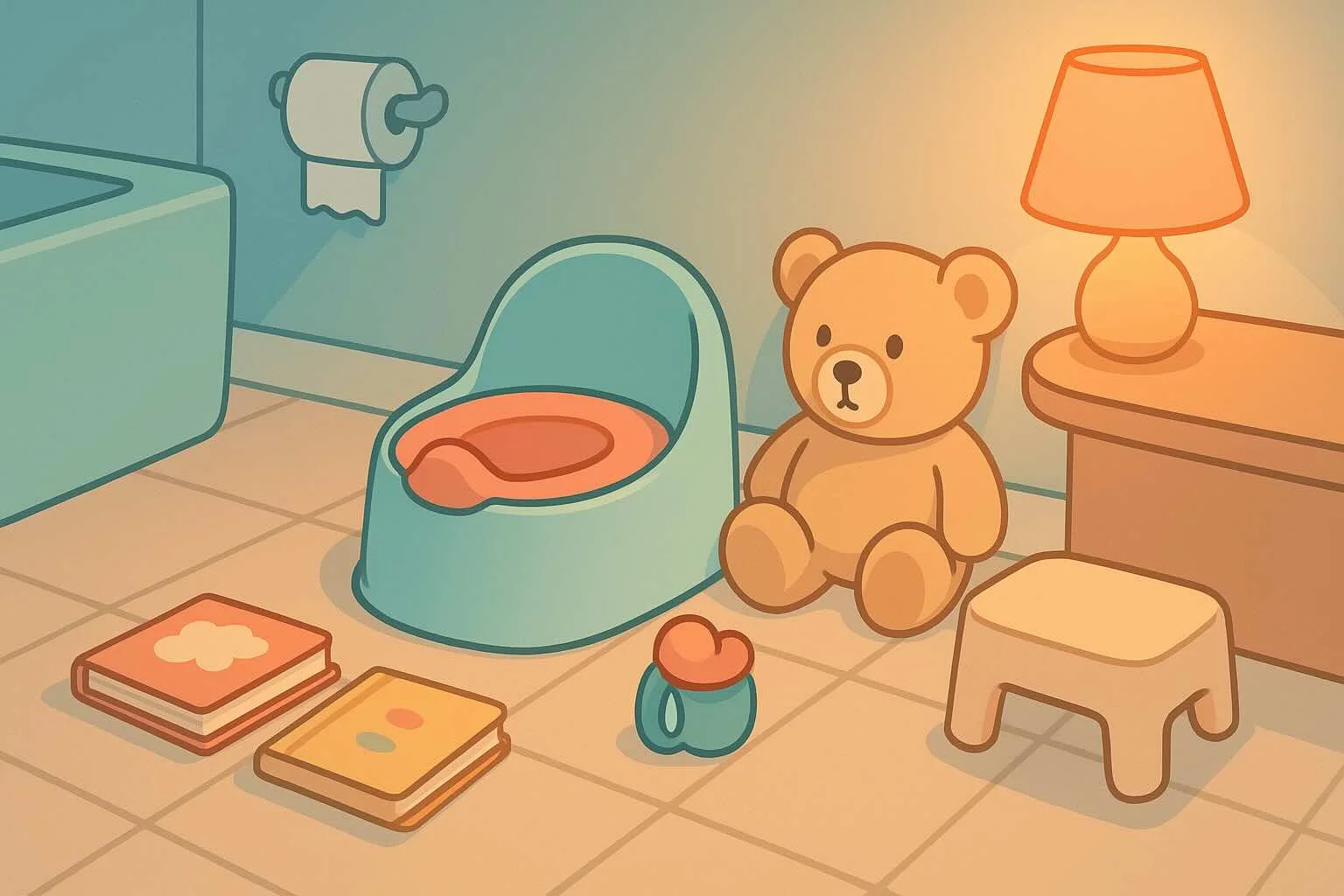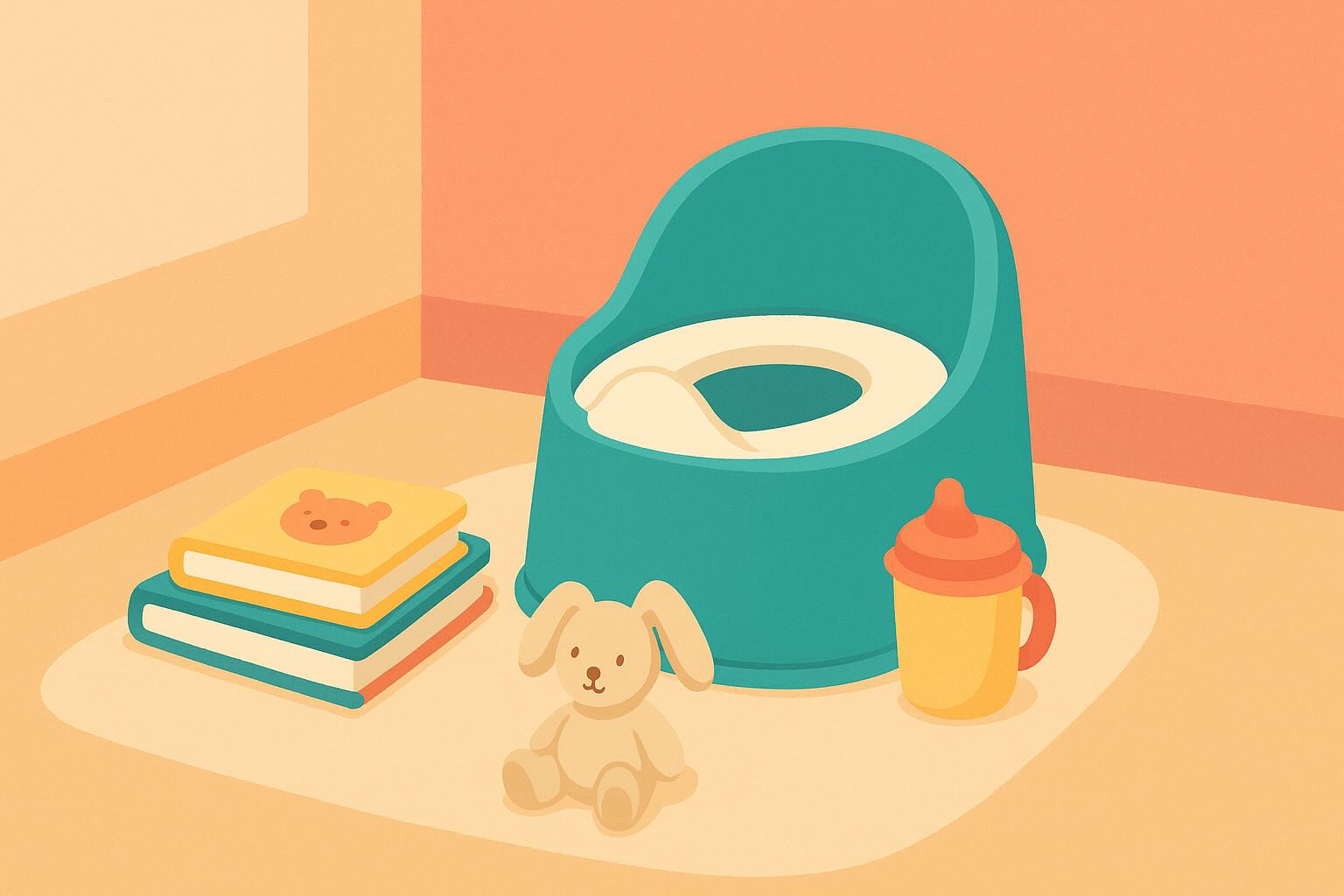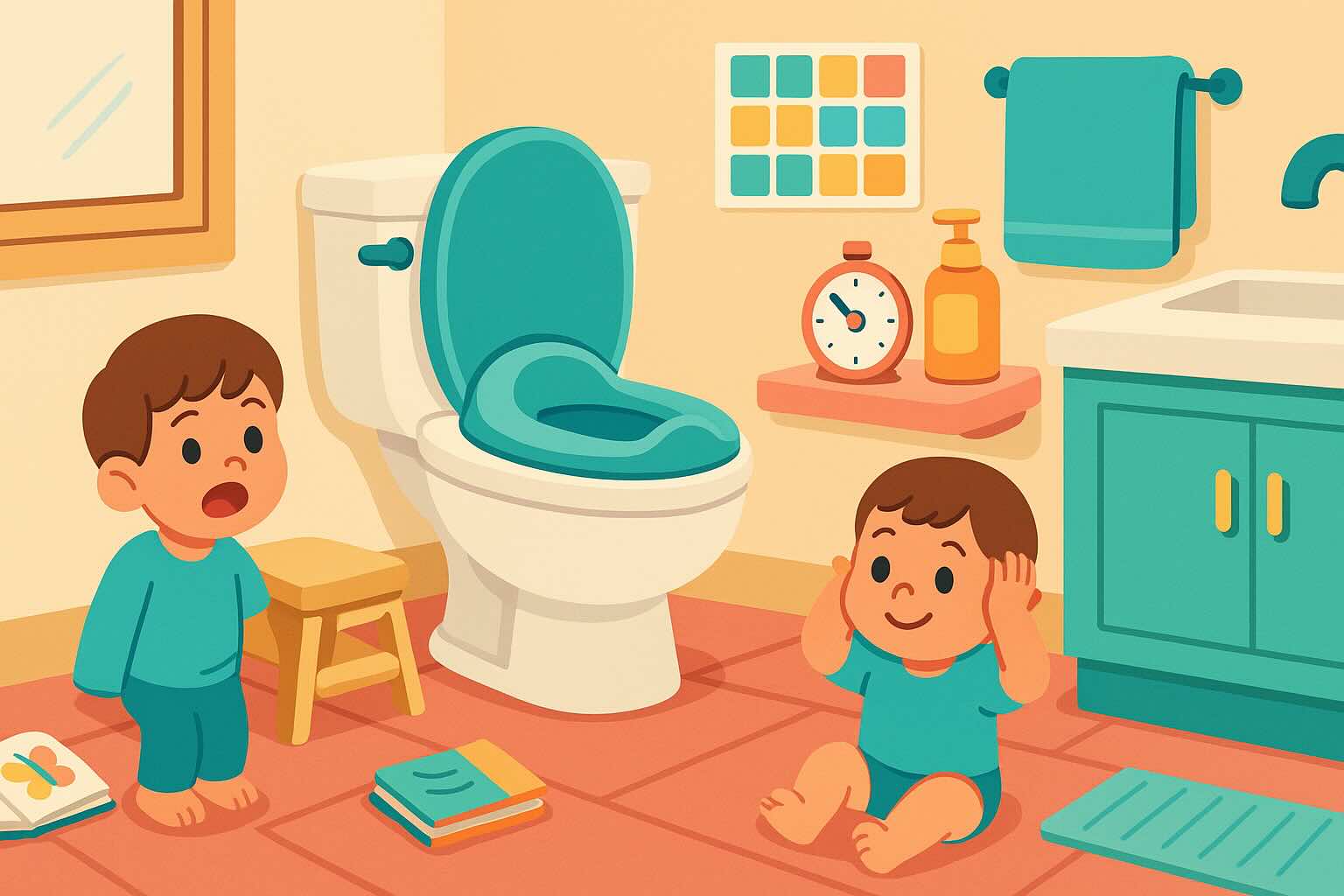Potty Training Boys: Evidence-Based Strategies Beyond Gender Stereotypes
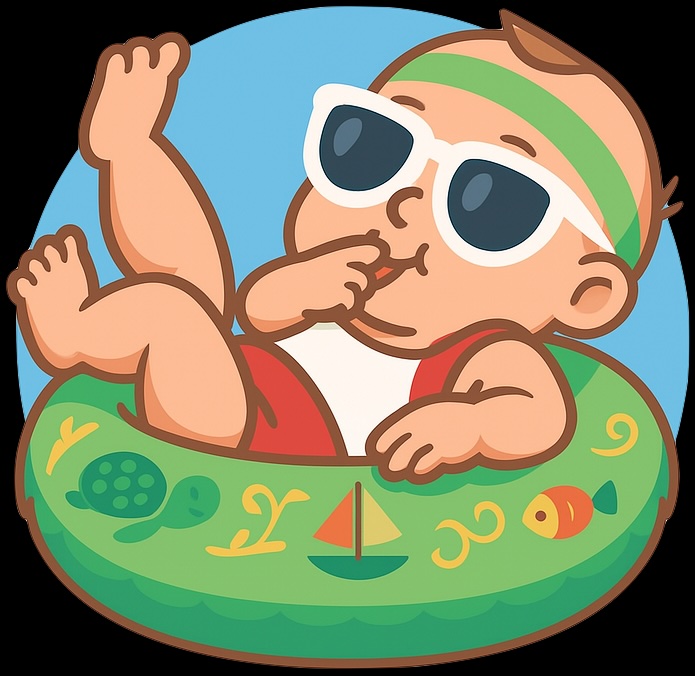
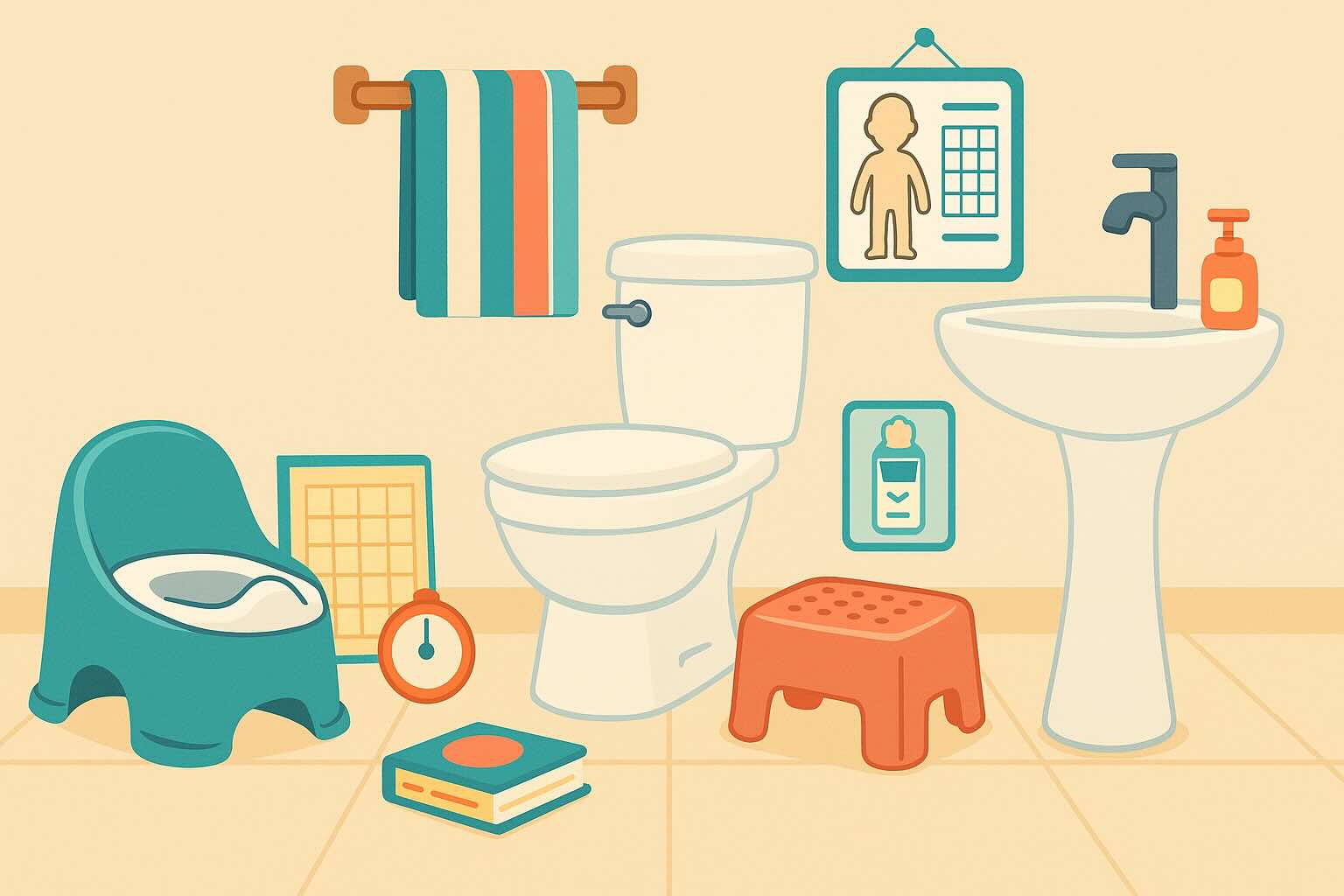
"Everyone keeps telling me boys are harder to potty train. My son just turned 3 and shows zero interest. My neighbor's daughter was trained at 2! Am I doing something wrong? Is it really because he's a boy?"
Let's separate fact from fiction about potty training boys.
The facts:
- Boys complete potty training an average of 2-3 months later than girls
- Individual variation is enormous—many boys train earlier than many girls
- Developmental readiness matters infinitely more than gender
The myths:
- "Boys are stubborn/lazy/less motivated" (harmful gender stereotype)
- "Boys can't learn as well as girls" (objectively false)
- "You need a male role model or he can't learn" (untrue—millions of single mothers successfully potty train sons)
The reality: Your son's potty training timeline will depend on his individual readiness, your approach, and your patience—not on outdated gender assumptions that create unnecessary stress and shame.
In this guide, you'll learn:
- What's actually different for boys (and what's just myth)
- Sitting vs. standing: the developmental sequence that works
- Aiming strategies that turn messes into learning (without shame)
- Timeline expectations based on research, not stereotypes
- Role modeling without pressure
- Avoiding harmful gender narratives while addressing practical concerns
Let's start by understanding what research actually says about gender and potty training.
What Research Actually Says About Boys and Potty Training
The study everyone cites: A 2002 study in Pediatrics found boys achieved daytime dryness at an average of 31-32 months, compared to 29 months for girls—a 2-3 month difference.
What this means:
- At a population level, boys take slightly longer on average
- The range for both boys and girls was 18 months to 4+ years
- Individual differences were far greater than gender differences
Why the small average difference might exist:
1. Developmental factors (modest biological differences):
- Fine motor control develops slightly earlier in girls on average
- Executive function maturation follows similar slightly earlier pattern
- BUT: These are small differences with massive individual variation
2. Social factors (cultural expectations):
- Parents report lower urgency/pressure for boys
- Different expectations: "Boys will be boys" mentality creates less structure
- Unconscious bias: parents may wait longer to start with boys, interpret same behaviors differently
3. Physical factors (anatomy):
- Standing to pee requires additional coordination skill (aiming)
- More steps to master (sitting for poop, standing for pee, aiming, cleanup)
What this does NOT mean:
- ❌ Boys are less capable or less intelligent
- ❌ Boys are "harder" in terms of effort required
- ❌ Gender determines your individual child's timeline
- ❌ You should have lower expectations for boys
The bottom line: Your individual son may train earlier or later than the average. His readiness signals matter far more than gender-based timelines.
For detailed readiness signs, see our complete potty learning guide.
Sitting First vs. Standing First: The Developmental Sequence That Works
The debate: Should boys learn to pee standing up from the start (like adult men) or sitting down first?
What experts recommend: Start with sitting. Here's why.
Why Sitting First Makes Sense
1. One skill at a time
Potty training involves multiple complex skills:
- Recognizing body signals
- Interrupting activities to go
- Getting to bathroom in time
- Removing clothing
- Using potty/toilet
- Wiping/cleanup
- Washing hands
Sitting for both pee and poop: Child learns potty use without adding aiming complexity.
Standing immediately: Child must simultaneously learn potty use AND aiming AND balance—overwhelming for developing brain.
2. Pee and poop in same position
When learning sitting:
- Body signals feel similar
- Same physical position for both functions
- Less confusion about "which position for which function"
When starting with standing:
- Must learn pee standing, poop sitting
- May try to poop while standing (messy, confusing)
- Takes longer to master both
3. Easier cleanup during learning
Sitting: Accidents are contained to pull-up/underwear or toilet/potty.
Standing: Pee goes EVERYWHERE during early learning—floor, walls, toilet seat, their clothes, their legs.
Translation: Sitting significantly reduces your daily cleanup burden during the 3-6 months of active learning.
4. Reduces performance pressure
Sitting: "Just relax and let pee/poop come out." Simple.
Standing: "Aim perfectly, don't spray, keep balance, hold penis at right angle, hit target." Complex and pressure-inducing.
Performance anxiety can create resistance and power struggles.
When and How to Introduce Standing
Wait for these signs:
- Child is consistently using potty while sitting (3-6 months of success)
- They show interest in standing (watching others, asking to try)
- Accidents are rare
- They have good balance and coordination
How to introduce (low-pressure approach):
1. Make it optional, not required
"You can pee sitting or standing—whatever feels comfortable. Want to try standing today?"
Never: "You're a big boy now, you should stand like daddy."
2. Start at child's potty or with step stool
- Small potty: Child stands at their level
- Regular toilet: Step stool positions them at right height
3. Show, don't pressure
If same-gender role model available and child interested:
- "Want to see how Dad does it?"
- Let child observe if comfortable
- No force, no performance pressure
If no role model or child not interested:
- "You stand facing the toilet. Your penis points down into the water."
- Demonstrate with doll/toy if helpful
- Books showing boys using toilet
4. Accept that sitting may remain preferred for poop
Many boys (and adult men!) prefer sitting for bowel movements even after mastering standing for pee. This is normal and fine.
Aiming: Making It Fun Instead of Shameful
The reality: Aiming is a complex motor skill. Your son will miss. A lot. For months.
The wrong response: Frustration, disappointment, lectures about "paying attention."
The approach that works: Make it a fun skill to practice, involve him in cleanup, stay neutral about messes.
Setup for Aiming Success
1. Right height
- Small potty at floor level, OR
- Step stool at regular toilet (stable, both feet supported)
- His penis should point down into water naturally (not aiming up/struggling)
2. Clear visual target
Target options (make it engaging):
- Cheerios in toilet water (aim at cereal!)
- Toilet target stickers (various designs available)
- Food coloring in toilet water (watch pee change color)
- Ping pong ball floating in water
Why this works: Turns aiming into a game, not a test. Reduces pressure, increases engagement.
3. Good lighting
- Can he see what he's aiming at?
- Add night light if bathroom is dim
Teaching Aiming Without Shame
Step 1: Demonstrate positioning (without pressure)
"When you stand, your penis points down into the water. Like this [show with hand gesture]. You can help hold it to aim."
Step 2: Stay close initially for support
- "Want me to stay here while you try?"
- Help position if needed (matter-of-factly, not taking over)
- Step back as they gain confidence
Step 3: Normalize misses completely
When pee gets on seat/floor:
"Aiming takes practice. Everyone learning has misses. Let's clean up together."
Hand them wipe/towel:
"Can you wipe the floor/seat? I'll get the cleaning spray."
Tone is everything: Matter-of-fact, collaborative, zero judgment.
Step 4: Celebrate effort, not perfection
"You're practicing your aim! Your body is learning where to point."
NOT: "Good job keeping it in the toilet!" (creates pressure for perfection)
Step 5: Always offer sitting as option
"If aiming feels tricky today, you can always sit. Your choice."
This removes performance pressure—sitting isn't "failing," it's a valid choice.
Timeline for Aiming Mastery
Months 1-2 of standing practice:
- Frequent misses (daily)
- Needs reminders to aim
- May spray while learning trajectory
Months 3-4:
- Improving accuracy
- More hits than misses
- Still occasional cleanup
Months 5-6+:
- Reliable aiming most of the time
- Rare misses (tired, rushed, sick)
- Independent cleanup of own messes
Key: This is separate from daytime potty independence. He can be fully potty trained (knows when to go, gets to bathroom in time) while still working on aiming accuracy.
Role Modeling: What Actually Helps (And What Creates Pressure)
The question: Does my son NEED to see a man use the bathroom?
The answer: No. It can be helpful if available, done without pressure, and respected boundaries—but it's absolutely not required.
If Same-Gender Role Model IS Available
What helpful modeling looks like:
1. Casual observation (if child interested)
- Child asks or shows curiosity
- Adult comfortable with child present
- No pressure, no performance
- "This is how my body works. Yours works similarly."
2. Narration without expectation
- "I'm going to pee. I'll stand here, aim down, and flush when done."
- NOT: "See? This is how big boys do it. You should do it like this."
3. Respect for privacy
- Child's privacy: Never force them to show anyone their bathroom use
- Adult's privacy: Modeling is optional, not required if uncomfortable
What creates pressure and should be avoided:
- ❌ "Watch how Daddy does it. Now you try exactly like that."
- ❌ Comparing: "Why can't you aim like your brother?"
- ❌ Pressuring adult who's uncomfortable: "You HAVE to model for him or he won't learn."
- ❌ Making it a spectator event: Bringing child to observe every single bathroom trip
If Same-Gender Role Model is NOT Available
Millions of single mothers successfully potty train sons. You absolutely CAN do this.
Alternative supports:
1. Books and videos
- "Potty Time" books featuring boys
- Age-appropriate videos showing boys using toilet
- Anatomical accuracy without shame
2. Verbal explanation
"Boys have a penis. Pee comes out the tip. You can aim it into the potty. When you're ready to try standing, I'll show you how to position your body."
3. Demonstrate positioning with doll/toy (if helpful)
- "The doll stands facing the potty, penis points down."
- NOT required, but can help visual learners
4. Extended family or trusted friends
- Uncle, grandfather, family friend if child comfortable and adult willing
- Keep it casual, no pressure
5. Trust that your son will figure it out
Honestly? Even without any same-gender modeling, your son will learn. Bodies are pretty good at figuring out what works through trial and error.
Avoiding Harmful Gender Narratives While Addressing Practical Concerns
Here's the balance to strike: acknowledge practical differences (anatomy, average timelines) while rejecting harmful gender stereotypes.
Language That Helps
✅ "Some children are ready earlier, some later. We're following YOUR body's signals."
(vs. ❌ "Boys are just slower/harder/lazier.")
✅ "You can sit or stand to pee—both work! You choose."
(vs. ❌ "Real boys/men stand to pee. Sitting is for babies/girls.")
✅ "Aiming is a skill that takes practice. Everyone learning has misses."
(vs. ❌ "Pay attention! Boys need to learn to aim!")
✅ "Your body is learning at YOUR pace. That's perfect."
(vs. ❌ "Your sister was trained at 2. What's wrong with you?")
What Matters More Than Gender
Individual readiness factors (see our 2-year-old, 3-year-old, or 4-year-old guides):
- Physical readiness (bladder control, motor skills)
- Cognitive readiness (understanding cause-effect, following instructions)
- Emotional readiness (interest, frustration tolerance, not overwhelmed by life stress)
- Communication ability (can signal needs)
- Independence drive (wants to do things themselves)
Your approach:
- Shame-free responses to accidents
- Respecting autonomy and body sovereignty
- Patience with developmental timeline
- Consistency across caregivers
NOT gender, but these individual factors, determine success timeline.
Common Boy-Specific Challenges (And Shame-Free Solutions)
Challenge 1: Physical Distraction/Exploration
What it looks like: Child plays with penis during potty time, gets distracted from actually using toilet.
Why it happens: Normal body exploration, especially when clothing removed.
Response:
- Matter-of-fact redirection: "Hands help hold you steady. Penis points down into toilet."
- If persistent: "You can explore your body during bath time or diaper changes. Potty time is for peeing."
- NEVER shame: "That's dirty/bad/inappropriate!"
Challenge 2: Peeing During Diaper Changes
What it looks like: You remove diaper and he immediately pees (often on you, the wall, etc.).
Why it happens: Reflex when diaper removed, especially in cool air.
Solutions:
- Keep diaper loosely over penis until last second
- Change on wipeable surface (changing pad, towel)
- Involve in cleanup neutrally: "Pee came out. Let's clean up together."
Challenge 3: Refusing to Sit ("I want to stand like Daddy!")
What it looks like: Child resists sitting, demands to stand before developmentally ready.
Response:
- Validate: "You're noticing that grown-ups stand. You're paying attention!"
- Set kind limit: "Your body is learning. Sitting helps you learn both pee and poop right now."
- Offer future: "When you're using the potty sitting really well, we can practice standing."
- Make sitting positive: "Lots of boys and men sit for poop. Standing is just for pee, and you'll learn that when ready."
Challenge 4: Pooping While Standing
What it looks like: Child tries to poop while standing (confusing pee position with all bathroom use).
Why it happens: Unclear differentiation between functions.
Response:
- Physical cue: "Poop needs sitting. When you feel poop coming, find a place to sit."
- Explain difference: "Pee can be sitting or standing. Poop is always sitting."
- If accident occurs: Clean up together neutrally, restate guideline.
The Bottom Line on Potty Training Boys
Your son is an individual, not a gender stereotype.
Yes, boys take 2-3 months longer on average. Yes, aiming adds complexity. Yes, some practical challenges are more common with boys.
But none of that means:
- He's harder to train
- You should have lower expectations
- Gender determines his timeline
- He needs a male role model to succeed
- Pressure or shame will accelerate the process
What actually matters:
- His individual readiness (physical, cognitive, emotional)
- Your shame-free, patient approach
- Sitting first, standing when ready
- Making aiming fun, not stressful
- Trusting his timeline (even if it's different than his sister's, cousin's, or neighbor's)
Most boys achieve daytime potty independence between ages 2.5-3.5 years. Some earlier, some later. The range is wide and normal.
Your job isn't to make him fit a timeline.
Your job is to support HIS body's development with patience, respect for his autonomy, and freedom from harmful gender narratives that create unnecessary shame and pressure.
When you do that, potty training stops being a gender-based battle and becomes what it should be: your son's accomplishment, on his timeline, with your supportive presence.
Related Resources
- Potty Learning Complete Guide - Comprehensive overview of the entire potty learning journey
- 2 Year Old Potty Training Guide - Readiness strategies for younger boys
- 3 Year Old Potty Training Guide - Autonomy-based approaches for preschool boys
- Poop Withholding & Anxiety Guide - Addressing poop training challenges
- Potty Training Accidents Guide - Shame-free accident responses
- Daycare Potty Requirements Guide - Meeting preschool deadlines
Complete Potty Learning Toolkit
Readiness assessments, age-specific strategies, and practical scripts to support your child's potty learning journey.
Need personalized support?
RootWise's AI coach can provide tailored strategies for your specific situation, available 24/7 when you need it most.
Learn More About AI Coaching →